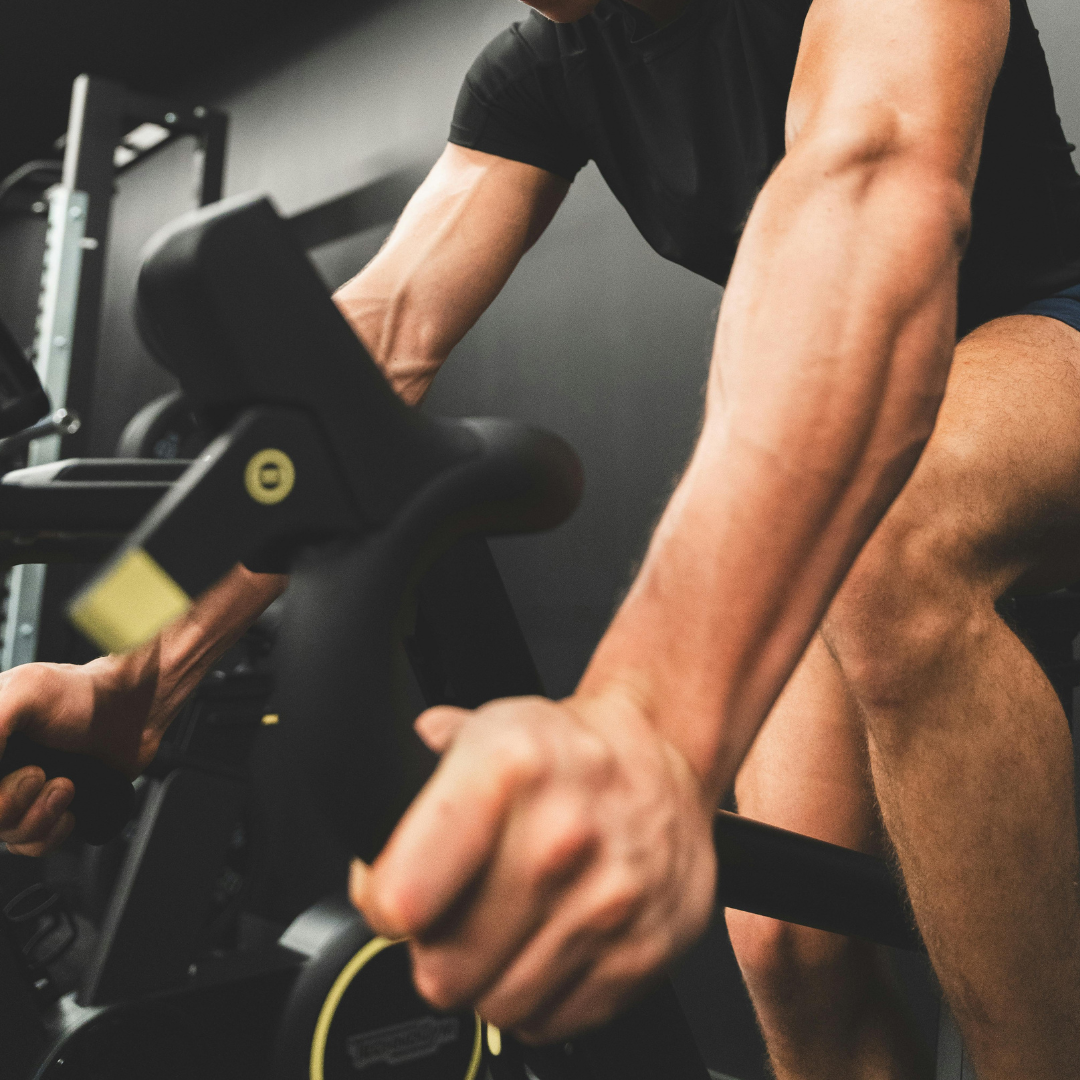If you’ve ever heard “cardio kills gains,” you’re not alone.
It’s one of the oldest myths in fitness—and one of the most misunderstood. While excessive cardio can interfere with muscle growth under certain conditions, the right kind of cardio can actually enhance performance, recovery, and body composition.
The truth lies in balance and programming. When done strategically, cardio and resistance training can coexist—and even complement each other—to help you build leaner, more functional muscle without sacrificing strength.
Let’s look at what the research says and how to program cardio correctly to protect (and even amplify) your muscle-building results.
1. The Origin of the “Cardio Kills Gains” Myth
The myth began with studies on “concurrent training interference” — the idea that endurance and strength adaptations compete at the cellular level.
Endurance training activates AMPK (an energy-sensing enzyme), while resistance training activates mTOR (the pathway responsible for muscle growth). When performed excessively or too close together, AMPK can blunt mTOR signaling—slowing muscle protein synthesis.
But newer research shows this interference is context-dependent:
-
It depends on how much and when you do cardio.
-
It depends on your goal (strength vs endurance).
-
And it depends on recovery and nutrition.
In other words, cardio doesn’t “kill” muscle—it’s misuse that does.
2. What Science Actually Says About Cardio and Muscle
Modern research largely debunks the “cardio kills gains” idea when cardio is programmed intelligently.
Key findings:
-
Moderate cardio does not inhibit muscle growth if overall training volume and protein intake are managed.
-
Combining HIIT or cycling with lifting results in equal or greater fat loss while maintaining lean mass.
-
The type, timing, and frequency of cardio determine its impact.
Reference:
Wilson et al., Concurrent Training: A Meta-Analysis Examining Interference of Aerobic and Resistance Exercises, J Strength Cond Res, 2012.
3. The Right Type of Cardio for Muscle Retention
Not all cardio is created equal. The style and intensity make the difference between catabolism and optimization.
1️⃣ Low-Intensity Steady State (LISS)
Examples: walking, incline treadmill, light cycling
-
Minimal muscle breakdown
-
Improves recovery and endurance
-
Best when performed on rest days or after strength sessions
2️⃣ High-Intensity Interval Training (HIIT)
Short bursts (20–60 sec) of max effort with rest intervals
-
Boosts fat loss, insulin sensitivity, and VO₂ max
-
Time-efficient but taxing—limit to 2–3x/week
-
Best when performed after lifting or on separate days
3️⃣ Endurance Cardio (Long-Duration)
Running, rowing, or cycling for 60+ minutes
-
Effective for aerobic development
-
May interfere with hypertrophy if overdone (>3 sessions/week or poor recovery)
4. How to Combine Cardio and Lifting Without Losing Muscle
| Goal | Cardio Type | Frequency | Timing |
|---|---|---|---|
| Fat Loss + Retain Muscle | HIIT or LISS | 2–4x/week | After lifting or AM/PM split |
| Performance/Endurance | HIIT + Steady State | 3–5x/week | Separate days |
| Pure Hypertrophy | LISS/Active Recovery | 1–2x/week | Off days only |
Pro tips:
-
Do strength before cardio (mTOR first, AMPK second).
-
Refuel immediately after with protein + carbs.
-
Avoid fasted HIIT if your goal is muscle preservation.
-
Limit total cardio duration to 30–40 minutes per session when in a growth phase.
5. Cardio That Helps Muscle Gains
Surprisingly, the right kind of cardio can enhance your results by improving:
-
Work capacity: better recovery between lifting sets.
-
Circulation: more nutrient delivery to muscle tissue.
-
Fat oxidation: leaner appearance and improved insulin sensitivity.
-
Heart health: stronger cardiovascular base improves longevity and energy levels.
Conditioned muscles recover faster—meaning more productive lifts and less soreness.
6. Nutrition Tips for Cardio + Lifting
To prevent muscle loss:
-
Protein: 1.6–2.2 g/kg body weight daily.
-
Carbs: don’t cut too low—your body needs glycogen for intense training.
-
Hydration: dehydration amplifies fatigue and reduces anabolic signaling.
-
Post-workout: refuel within 30–60 minutes with protein + carbs.
7. Real Talk: When Cardio Can Hurt Gains
Cardio becomes a problem when:
-
You’re in a large calorie deficit for extended periods.
-
You’re doing excessive endurance training (5–6 days/week).
-
You’re not recovering properly (poor sleep, low calories).
-
You’re neglecting resistance training progression.
Balance is everything—too much cardio in a calorie deficit equals muscle loss; too little equals poor cardiovascular fitness.
8. Key Takeaways
-
Cardio doesn’t kill muscle gains—it’s how you program it that matters.
-
Prioritize resistance training; use cardio strategically.
-
Keep HIIT short and recovery-focused.
-
Eat enough protein and total calories to support repair.
-
When programmed correctly, cardio makes your gains leaner, stronger, and more sustainable.
References
-
Wilson JM et al., Concurrent Training: Meta-Analysis, J Strength Cond Res, 2012.
-
Hickson RC, Interference of Strength and Endurance Training, Eur J Appl Physiol, 1980.
-
Schoenfeld BJ, Mechanisms of Hypertrophy, J Strength Cond Res, 2010.
-
ACSM Guidelines for Resistance and Aerobic Training.
-
NSCA Position Statement: Concurrent Training Best Practices.
-
PubMed: https://pubmed.ncbi.nlm.nih.gov
Read more

How long does it really take to build visible muscle? Learn the science of hypertrophy, recovery, and training consistency — plus how to accelerate results naturally.

Learn the symptoms, causes, and treatment of weightlifter’s shoulder (distal clavicle osteolysis). Discover how to train smart, relieve pain, and prevent future flare-ups.

